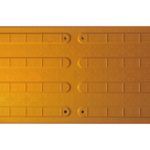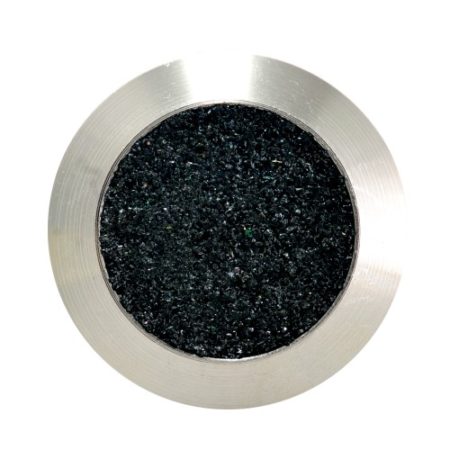FiberTac is new range of surface Mount TGSI which provides the industry with an additional option for retro fitting system
FibreTac is formed from ultra UV stabilised resin and is reinforced with embedded fibreglass.
The final product is an ultra strong material that not only exceeds the properties of easily-decomposable rubber/plastic 300mm stick on TGSI ,but also resolves the bubbling and dog ear issues that are major tripping hazards linked with stick on product
FiberTac is manufactured to conform with industry standard set up in ANZ 1428.4.1:2009 standard
has a high slip rating which makes it suitable for most Australian pedestrian walkways.
FiberTac alike products are NOT suitable for asphalt surfaces.
– Testing accredition : AS/NZA 4586 Appendix A – Wet Pendulum 4S “P5”
AS/NZS 4586 Appendix D -Oil Wet Ramp Test “R12″Hazard “R11″Dir
-Testing accredition : AS/NZS 1428.4 Wet & Sry Luminance Reflectance : Dry 48.63 / Wet 47.38
ISO 10545-3 Water Absorption 0.0001%
Installation tips :
1) Mark out the area where TGSI will be applied with masking tapes as indicated in AS/NZS 1428.4
2) Clearn working surfaces to ensure free to dust, dirt and level all uneven surfaces with a hand grinder. Roughen substrate with the hand grinder where glue is to be applied.
3) Drill holes according to the positions marked ont the TGSI with a template. Hole size depends on the screws used. Vacuum clean the entire area afterwards. If tiles are cut to fit undulated surface or pit lids etc, extra screws must be applied to secure the newly formed corners and edges.
4) Apply adhesive ( two parts epoxy is recommended e.g: HIlti RE500) to the back of tile along the grooves, thinner on the outer edges and thickner in the middle. A complete round of glue must be applied around the edges to prevent accumulation of fine dirt particles which will eventually lifting the edges.
5) Position TGSI onto the marked area.
6) Insert plug into the predrilled holes, then mechanically secured the TGSI into position with Stainless gauge 5 screws.
7) Peel off all masking tape after glue is set.
8) Extra screws on TGSI are needed when curved substrates are encoutered, actual screw positions would depend on the degree and profile of teh curvature.
9) TGSI needs to be cut along the sharp edges when sudden drop in the substrate is observed. This is to ensure no excessive bending in the TGSI plate is created.














